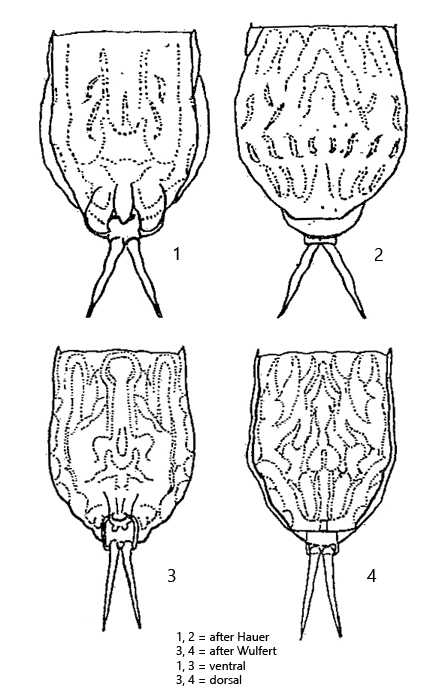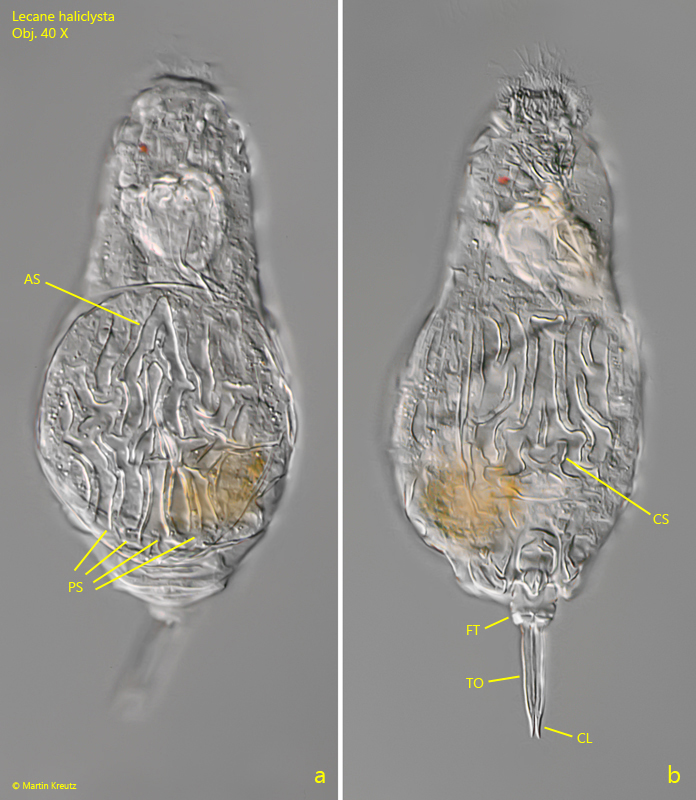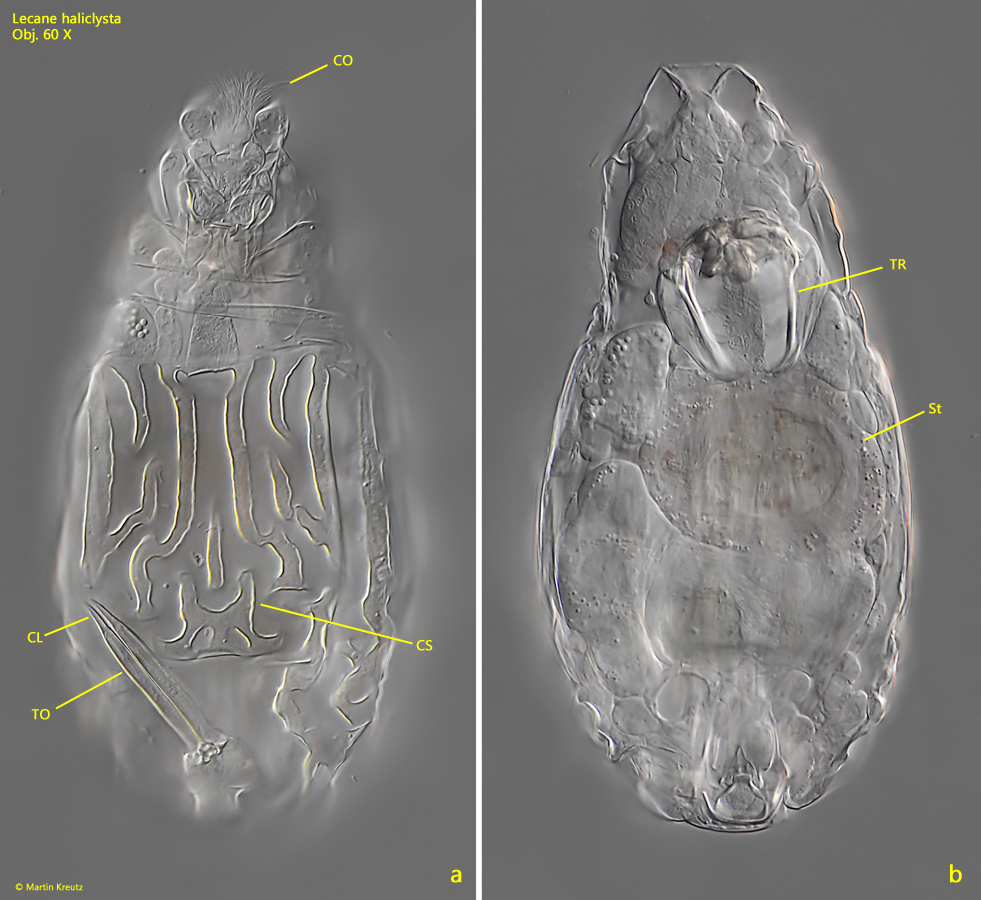Lecane haliclysta (Harring & Myers, 1926)
Most likely ID: n.a.
Synonym: n.a.
Sampling location: Simmelried
Phylogenetic tree: Lecane haliclysta
Diagnosis:
- lorica elongate-ovate (of extended specimen)
- anterior ventral margin of lorica truncated in straight line with two lateral small spines
- the cuticle of the lorica is flexible and strongly sculptured with ridges
- length about 110–150 µm (of retracted specimens)
- toes long (31–42 µm)
- claws very short (8 µm), sometimes strongly reduced
- half of the second foot segment extends beyond the posterior margin of the lorica
- one eyespot

I found the specimen of Lecane haliclysta in the Simmelried in July 2006 (s. fig. 1 a-b) and December 2023 (s. fig. 2 a-b). This species is characterized by a highly sculptured lorica. The ornamentation is described to be variable, but there are some structures that seem to be constant. On the dorsal side, an arrow-shaped structure can be seen (s. fig. 1 a). Below this arrow-shaped structure, structures arranged in parallel can be found (s. fig. 1 a). On the ventral side of the lorica, however, a cup-shaped structure is very characteristic (s. figs. 1 b and 2 a). Thus, the ornamentation of my specimen agrees very well with Wulfert’s drawings (s. drawings above). Another characteristic of Lecane haliclysta are the strongly reduced claws as well as the second foot segment, half of which extends beyond the posterior margin of the lorica (s. fig. 1 b).

Fig. 1 a-b: Lecane haliclysta. L = 100 µm (of lorica). A slightly squashed specimen from dorsal (a) and from ventral (b). Note the arrow-shaped (AS) and parallel arranged structures (PS) of the dorsal lorica as well as the cup-shaped structure (CS) of the ventral side of the lorica. The second segment of the foot (FT) overhangs the posterior margin on the lorica. CL = claws, TO = toes. Obj. 40 X.

Fig. 2 a-b: Lecane haliclysta. L = 150 µm (of lorica). Two focal planes of a slightly squashed specimen from ventral. Note the cup-shaped structure (CS) of the ventral side. CL = claws, CO = corona, St = stomach, TO = toes, TR = trophi. Obj. 60 X.